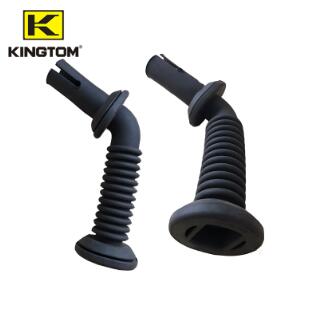Safeguarding Auto Wiring Harnesses: Understanding Key Environmental Factors for Flexible Protective Sleeves
2024-02-27
Introduction:
Flexible protective sleeves are essential components in automotive engineering, providing vital protection to wiring harnesses against various environmental hazards. To ensure the durability and reliability of auto wiring systems, it's crucial to understand the key environmental factors that these protective sleeves must withstand. In this blog, we delve into the prominent environmental challenges faced by auto wiring harnesses and how flexible protective sleeves address them effectively.
1. Temperature Extremes:
Automotive environments can subject wiring harnesses to extreme temperatures, ranging from scorching heat in engine compartments to freezing conditions in colder climates. Flexible protective sleeves must withstand these temperature extremes without compromising their structural integrity or protective properties. Materials with high heat resistance, such as polyethylene terephthalate (PET) and polyamide (Nylon), are commonly used to ensure optimal performance across a wide temperature range.
2. Moisture and Humidity:
Moisture ingress can lead to corrosion, short circuits, and electrical malfunctions in auto wiring harnesses. Flexible protective sleeves act as barriers against moisture and humidity, preventing water intrusion and safeguarding electrical connections. Materials with excellent moisture resistance, such as thermoplastic elastomers (TPEs) and polyvinyl chloride (PVC), are preferred choices for sleeves deployed in wet or humid environments.
3. Abrasion and Wear:
Automotive wiring harnesses are exposed to mechanical abrasion and wear due to friction against adjacent components, vibration, and vehicle movement. Flexible protective sleeves serve as abrasion-resistant shields, minimizing damage to the wiring insulation and ensuring long-term reliability. Materials like polyethylene (PE) and reinforced Nylon offer superior abrasion resistance, enhancing the durability of protective sleeves in high-wear areas.
4. Chemical Exposure:
Exposure to automotive fluids, oils, fuels, and chemicals can degrade wiring harnesses over time, leading to performance issues and safety hazards. Flexible protective sleeves must withstand chemical exposure without deterioration or loss of protective efficacy. Selecting materials with robust chemical resistance, such as fluoropolymers and certain elastomers, ensures compatibility with a wide range of automotive fluids and chemicals.
5. UV Radiation:
Exposure to sunlight and ultraviolet (UV) radiation can cause degradation and discoloration of protective sleeves, compromising their protective properties and aesthetic appeal. UV-stabilized materials, such as UV-resistant PVC and specialty elastomers, mitigate the effects of UV radiation, prolonging the lifespan and maintaining the integrity of flexible protective sleeves exposed to outdoor or open-air environments.
Conclusion:
In conclusion, flexible protective sleeves for auto wiring harnesses must withstand a myriad of environmental challenges to ensure the reliability, longevity, and safety of automotive electrical systems. By addressing temperature extremes, moisture ingress, abrasion, chemical exposure, and UV radiation, these sleeves play a crucial role in safeguarding wiring harnesses against diverse environmental hazards. Automotive professionals should prioritize the selection of protective sleeves with optimal resistance to key environmental factors to uphold the performance and integrity of wiring systems in vehicles.



